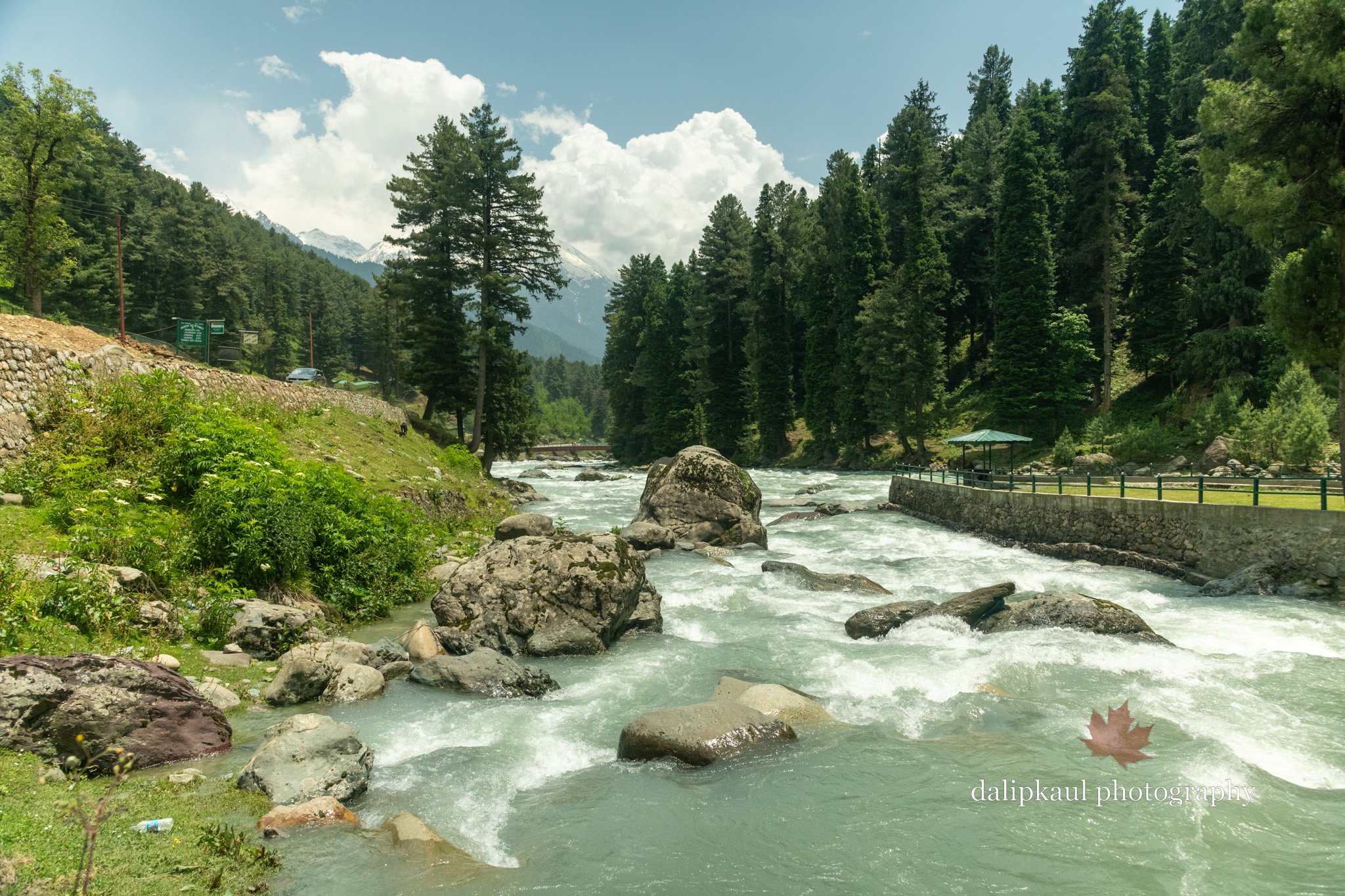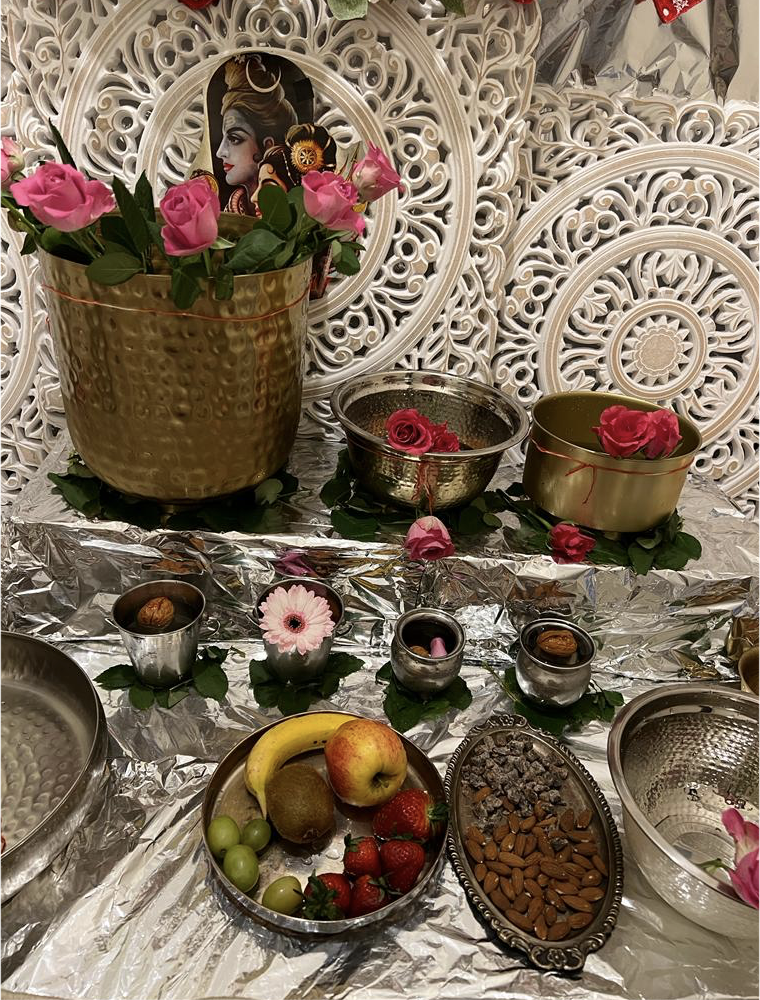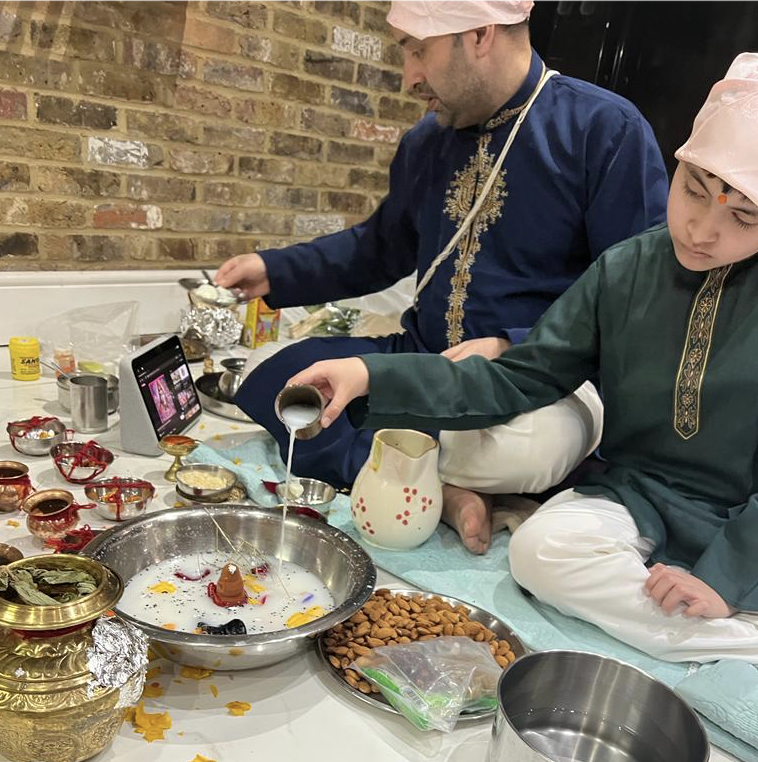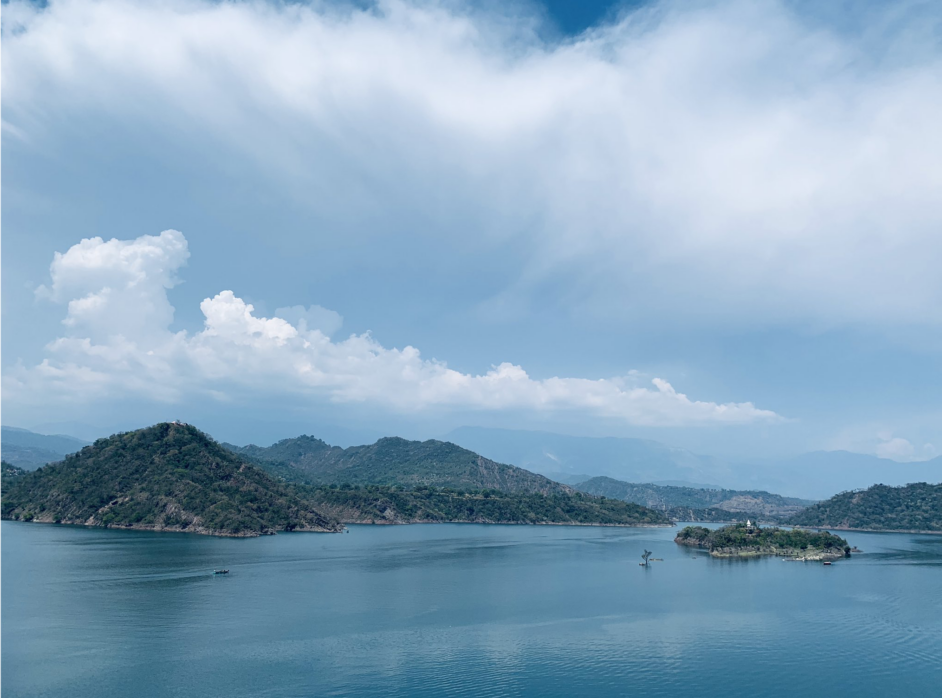
My Amaranth Yatra
Kapil Dhar
By the Kripa of great Bholenath, this year I took the pilgrimage trek to Shri Amarnath cave. It was an amazing experience, both, spiritually and physically.
On the way to the magnificent cave, the 15km long trek of steep heights, the beaming snow-clad mountains of South Kashmir make the scenery mesmerizing. The serenity of the surroundings, the refreshing energies in the breeze and the blessed vibe of devotees look like a spiritual festival. The prayers and bhajans of the devotees throng the entire trek, it sounds like Shiva’s own corridor calling the devotees in His great abode to have a glance at the meeting point of Maa Parvati and Shiva.
The story goes that Lord Shiva shared the secret of immortality and the essential responsibilities of an eternal being with Maa Parvati as part of the Amarprem katha in the sacred Amarnath cave.
The Calling
At the KPAE havan in Birmingham, earlier this year, Dr Sanjay ji (Saproo) kindly offered me to come along for the pilgrimage and now when I reflect it sounds like a real calling from Mahadev. The procedural formalities for the pilgrimage are more sophisticated now than a few years ago. The administration wants to track all the footfall on both the trek routes (Pahalgam and Baltal) and each person must have a tag that is provided at the start of the trek, it is much like an employment badge that corporates use for access control.
An advance plan is advised and there are certain registration documents also required before a person can start the trek. All these preparations have their own charm while one looks forward to the great trek for the “appointment” with the Bholenath. The pilgrims are given a date on which they can trek, there is a limited tolerance to the changes in the date, if any.
The pilgrims range from young people to senior citizens, the administration has agreed on the age range of 13 years to 70 years, considering the lack of oxygen at the higher altitudes and steep climbs on the way.
Having grown up in Kashmir, I have lots of memories when the relatives and elders in the family used to go for Shri Amarnath yatra and narrate beautiful stories after coming back, talking about the scenery, devotees, porters, horses available for the trek, and generous Bhandaras (the free community kitchens) hosted by business houses, societies, or communities enroute to the cave at major milestones.
The climb and the options
We took the steep but shorter path, Baltal valley route. Baltal valley is a base camp for Shri Amarnath yatra, and the climb starts from there. From Sonamarg, a popular tourist destination, Baltal is 15 kms and the vehicles can take the pilgrims up to the Baltal base camp only. We started the trek early in the morning at 4 am after an overnight stay at Baltal, it is advised for acclimatisation and for making the appropriate timing for the Darshan.
The pilgrims can take tents or stay at the Bandaras, if there is an arrangement, in Baltal valley. The Bandara economy is a great case study, it is humbling to see how the volunteers generously support the pilgrims through their effort, time, and attention, in addition to the moral support. The pilgrims are supported to take on the trek as calmly as they can, removing the concerns for the different conveniences like food, medical needs, or shelter. The Bandara volunteers also inspire the pilgrims to make sure that the littering, wastage of food or any damage to the facilities are avoided. The government also deploys paramilitary forces for the security, rescue, and medical support enroute the pilgrimage right from Jammu onwards.
The other route for the cave starts from Pahalgam and is a longer route of nearly 35 kms, however, it is less steep, with the scenic views aplenty. More and more people prefer the longer route if they can spare a few days for the trek. I am keen to take that route in future if Bholenath is merciful.
The great trek and Darshan
The first check point on Baltal route is at Domel, where the pilgrims are given the tags for their identification. The tag has all the details of the pilgrim including the ‘next of kin’, address, medical information, etc. This helps the authorities to provide the required support in case of any eventuality. The steep ascents greet the pilgrims immediately after Domel, and the first 5 to 7 kms are very challenging. The body must navigate different oxygen saturation levels within the short range of distance as the altitude varies immediately and goes up to 15000 ft by the middle of the trek. And this is how the pace needs to be maintained to strike the balance between effort and comfortable breathing. Sometimes people can feel breathless and may need medical assistance.
We reached the mid-point of the trek, Barari top (15000 ft) around 10 am. There were options to take the horse for the trek, but we chose to continue on-foot. After the mid-point of the trek there’s a subtle descent towards the cave but altitude stays above 13000 ft. This third quarter of the trek is very pleasant as more scenic views greet the pilgrims, the beautiful glaciers on top of the Himalayan peaks make a wonderful backdrop of the selfies and group pictures of the pilgrims.

The cave already offers a magnificent view as we step into the last quarter of the trek. Exactly, at this point, I received a phone call from my daughter, and I was able to show the cave to my family on a video call, it was amazing to note that the mobile networks are managed quite effectively at such a remote height. Like any large endurance trek or run, the last quarter stretches a bit even though the finish point is in sight. But here it was altogether different experience as one could already be in the court of Lord Shiva and each step towards the cave was already enhancing the spiritual proximity. All the devotees suddenly start appearing familiar, the chants of ‘Har Har Mahadev’ and ‘Jai Baba Barfani, Bhookhe ko ann, pyaase ko paani’ greeting one another and morally picking up the energies of all.
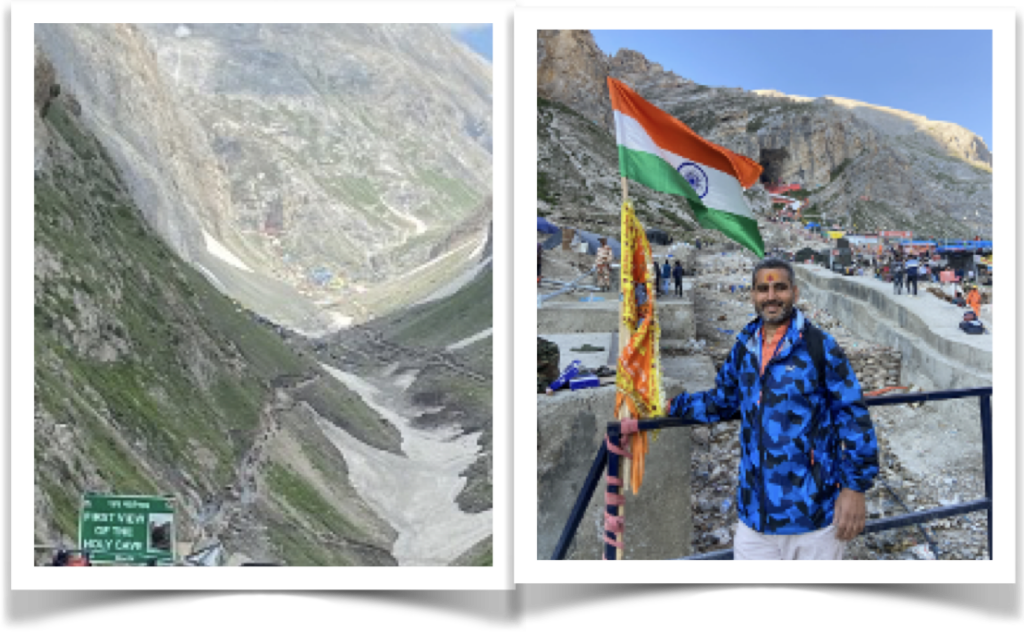
The two routes (Pahalgam and Baltal) meet at the Sangam junction of the trek, just before the last mile to the destination and one notices the porters, horse men, and palkiwallas station around the area to let the pilgrims alight and take the last stretch on their own. The helicopter service is also made to make its stop farther from the cave, near Panchtarni. The weather has largely warmed up over the years, I found it very warm during my trek, mostly above 15 degrees of temperature during the day, although evenings and nights were colder.

Finally, we made it to the cave at 1.30 pm, the multiple cloak room facilities near the cave help one to be light for the darshan and the mobile phone usage is prohibited at the cave. Some pilgrims choose to take a dip in the Amravathy river (a tributary of Chenab) that flows in the vicinity, as one can imagine the water is extremely cold. The Shrine board has centralised the prasad distribution, which is very effective to manage the traffic of pilgrims.
The final set of the stairs takes one to the cave, where the darshan is managed by the deployed security personnel to maintain the appropriate traffic of devotees. The devotees are guided to venerate at the Himling of Bholenath and Maa Parvati, giving reasonable time to everybody. The noticeable dip in the temperature in the cave is amazingly refreshing. It immediately whizzes past the exhaustion of the pilgrims, as if, Shiva breathes energy into His devotees for their journey of devotion. At that point of time, the eternity looks real. I was able to stay through the 4pm Aarti and experience those great moments a little longer.
The descent and the memories
We spent a fair amount of time at the cave and allowed the tired to take some rest, finally starting the descent at 5 pm. By a few hours into the descent, Purnima moon graced the skies with a wonderful moonshine sneaking through the sharp Himalayan peaks. It looked as if Bholenath was providing us the divine light from his own crowned moon to make sure we are safely back into the base camp of Baltal. Contrary to intuition, descent can be challenging too if the climb is steep and add to that the speed at which some of the fellow travellers of other species (horses), carrying the pilgrims or the supplies raise the dust on the path that has been treaded through the day by thousands of people.

The pilgrimage of Shri Amarnath is very special for the people of Kashmir as it reminds us of our own roots in Kashmir and how much we revered Shiva in our routine life. The influence of Shiva and His values are prevalent in all our life events, rituals, philosophies, and ways of living.
By the grace of Shiva, I was able to visit many temples in Kashmir during this trip like Jyeshta Mata mandir, Mattan Sun temple, Shankaracharya mandir, Hari Parbat Sharika mandir and Mata Kheer Bhawani Mandir. It was very humbling to go back to many of these sacred abodes of our revered deities for the ages, it gives one a perspective of belonging, somewhat like a new-born sapling discovering its roots by looking inwards.
Har Har Mahadev!

